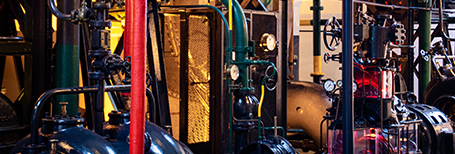
since january 1, 1995, the machinery directive 89/392/eec, which was first issued by the european union, has been implemented. all machinery exported to the european union market is required to carry out ce certification of machinery and apply ce mark symbolizing safety and permanence in accordance with the relevant technical regulations of the european union to prove that the machinery complies with the relevant directives. in june 2006, the european union issued the new machinery directive 2006/42/ec, which will be enforced from december 30, 2009, replacing the old directive 98/37/ec. the new directive has new requirements on product scope, boundary division with other directives, market supervision, conformity assessment procedures and basic health and safety requirements. mechanical products exported to the european union must be subject to safety assessment in accordance with the requirements of the new directive 2006/42/ec and affixed with ce marks.
the core requirements of the machinery directive: the structure of the machinery must ensure its proper function. under the predetermined conditions of the manufacturer, as long as the machinery is operated according to the regulations, it can not cause harm to people during operation, commissioning and maintenance. therefore, measures must be taken to eliminate all accident risks of the machinery within the expected life (including assembly and unloading), including accident risks caused by predictable abnormal conditions.
according to the provisions of the directive (article 1.2), any combination formed by the combination of parts and components. at least some of them are moved by appropriate actuators, controllers or circuits for the purpose of raw material processing, handling, transportation or packaging, which are called machines.
the term "machinery" also includes a group of machines arranged and controlled to achieve the comprehensive functions of raw material processing, processing, transportation and packaging. in addition, some parts and components that ensure safety in use, and which will endanger the safety or health of personnel exposed to them if the parts and components fail, also belong to the machinery in the broad sense of this directive.
the scope of products covered by the machinery directive is as follows:
ⅰ.common machinery:
1.civil machinery;
2.plastic machinery;
3.beverage machinery;
4.packaging machinery;
5.printing machinery;
6.metal processing machinery;
7.casting machinery;
8.chemical machinery;
9.textile machinery;
10.metallurgical machinery, etc.
ii.hazardous machinery:
1.circular saws (single- or multi-blade) for working with wood and material with similar physical characteristics or for working with meat and material with similar physical characteristics
2.hand-fed surface planing machinery for woodworking
3.thicknessers for one-side dressing having a built-in mechanical feed device, with manual loading and/or unloading for woodworking.
4.band-saws with manual loading and/or unloading for working with wood and material with similar physical characteristics or for working with meat and material with similar physical characteristics
5.combined machinery of the types referred to in points 1 to 4 and in point 7 for working with wood and material with similar physical characteristics
6.hand-fed tenoning machinery with several tool holders for woodworking
7.hand-fed vertical spindle moulding machinery for working with wood and material with similar physical characteristics
8.portable chainsaws for woodworking
9.presses, including press-brakes, for the cold working of metals, with manual loading and/or unloading, whose movable working parts may have a travel exceeding 6 mm and a speed exceeding 30 mm/s
10.injection or compression plastics-moulding machinery with manual loading or unloading.
11.injection or compression rubber-moulding machinery with manual loading or unloading.
12. manually loaded trucks for the collection of household refuse incorporating a compression mechanism.
13. removable mechanical transmission devices including their guards
14.guards for removable mechanical transmission devices
15. vehicle servicing lifts
16. devices for the lifting of persons or of persons and goods involving a hazard of falling from a vertical height of more than three metres
17.portable cartridge-operated fixing and other impact machinery
18. protective devices designed to detect the presence of persons
19.power-operated interlocking movable guards designed to be used as safeguards in machinery referred to in points 9, 10 and 11
20. logic units to ensure safety functions
21. roll-over protective structures (rops)
22. falling-object protective structures (fops)
ce certification provides a unified technical specification for products of various countries to trade in the european market and simplifies the trade procedures. any country's products must be ce certified and affixed with ce mark before entering the eu and the european free trade area. therefore, ce certification is the passport for products to enter the markets of eu and european free trade area countries. ce certification means that the products have met the safety requirements specified in the eu directives. it is a commitment of enterprises to consumers, which increases consumers' trust in the products. products with ce marks will reduce the risk of sales in the european market.
is it necessary to send samples for testing to apply for ce certificate of machinery directive?
for small mechanical equipment, samples shall be sent to the laboratory for testing; for large equipment, the certification engineer will go to the factory of the equipment manufacturer for relevant tests.
what are the products that do not fall within the scope of eu machinery directive md?
1.lifting appliances whose speed is not greater than 0,15 m/s,
2.construction site hoists,
3.cableways, including funicular railways,
4.lifts specially designed and constructed for military or police purposes,
5.lifting appliances from which work can be carried out,
6.mine winding gear,
7.lifting appliances intended for lifting performers during artistic performances,
8.lifting appliances fitted in means of transport,
9.lifting appliances connected to machinery and intended exclusively for access to workstations including maintenance and inspection points on the machinery,
10.rack and pinion trains,
11.escalators and mechanical walkways.
is it necessary to do the factory audit to apply for the ce certificate of machinery directive?
it is not necessary to audit the factory for ce certification of ordinary mechanical equipment. however, when applying for ce certification for dangerous mechanical equipment included in annex 4 of the machinery directive, the notified body needs to audit the manufacturer's factory.







tel: 86-400 821 5138
fax: 86-21 3327 5843
email:noa@noagroup.com